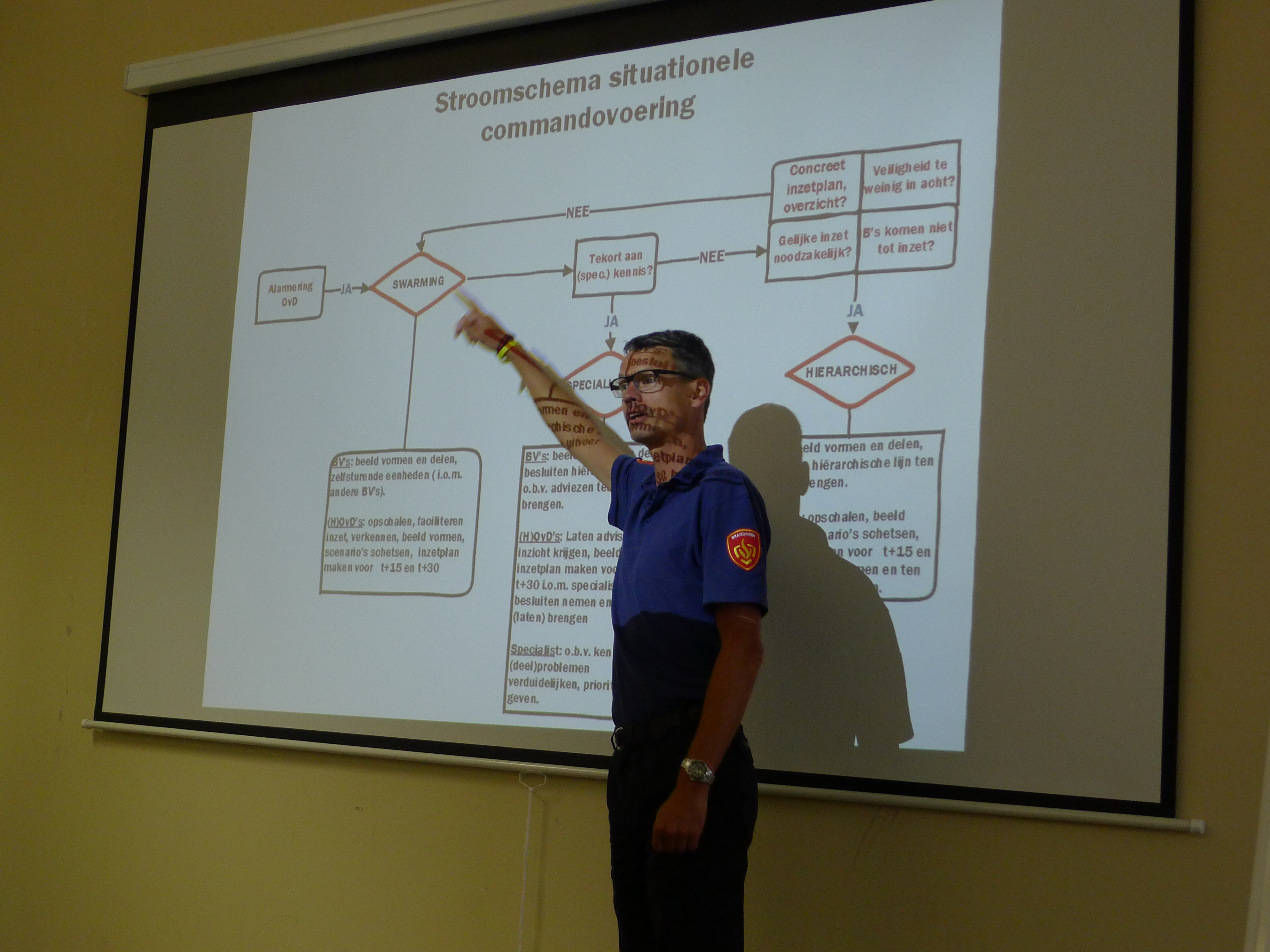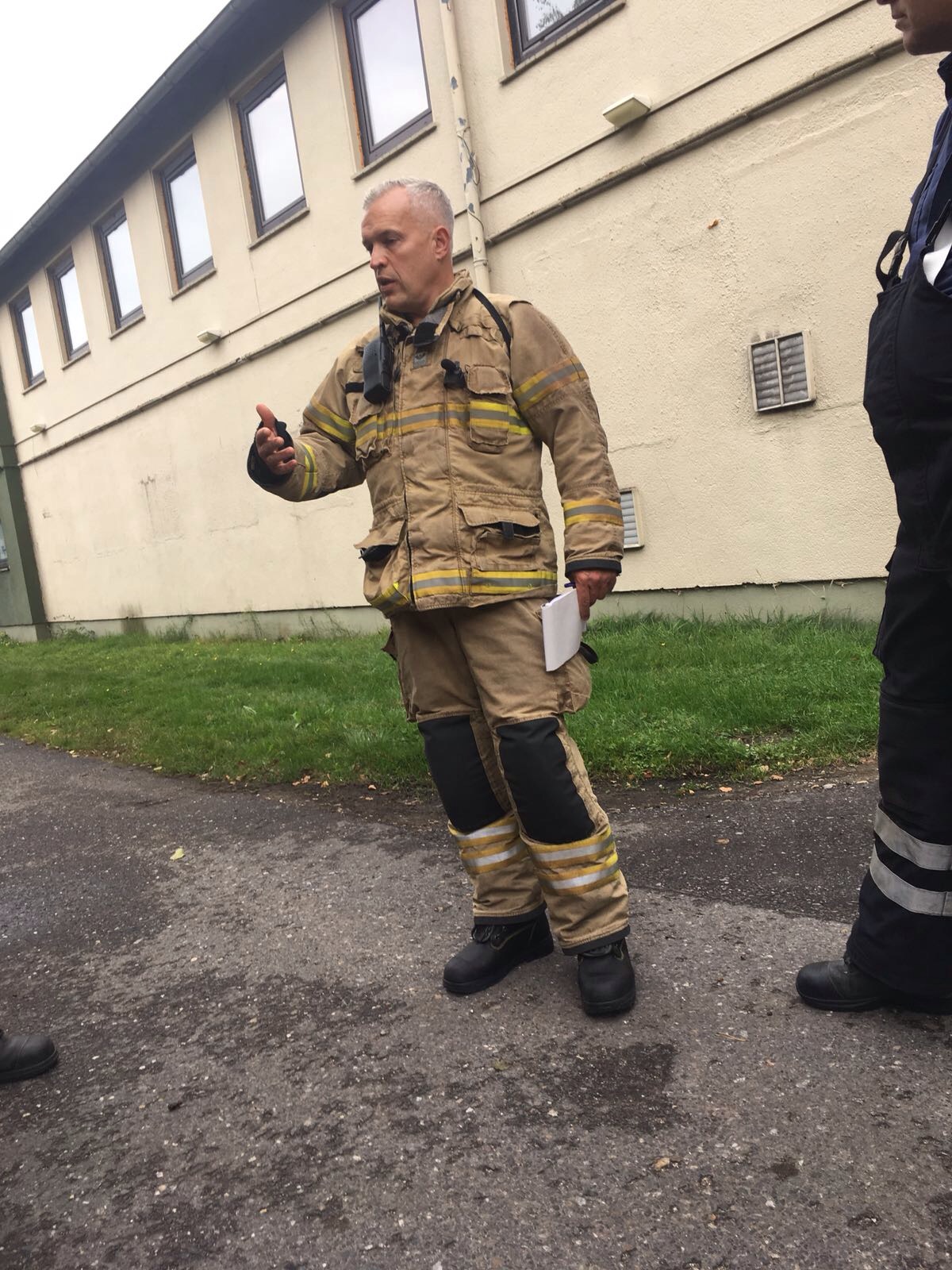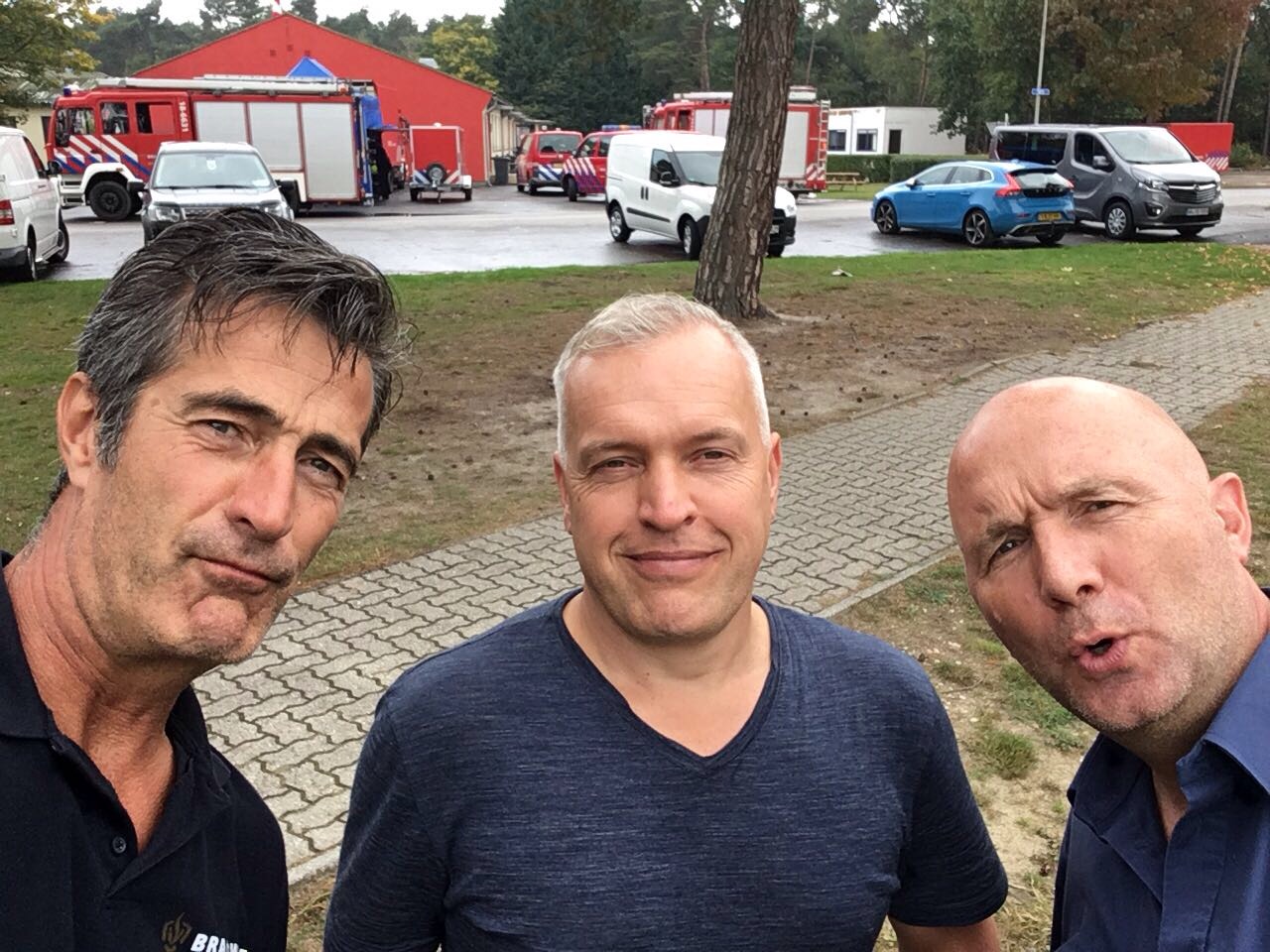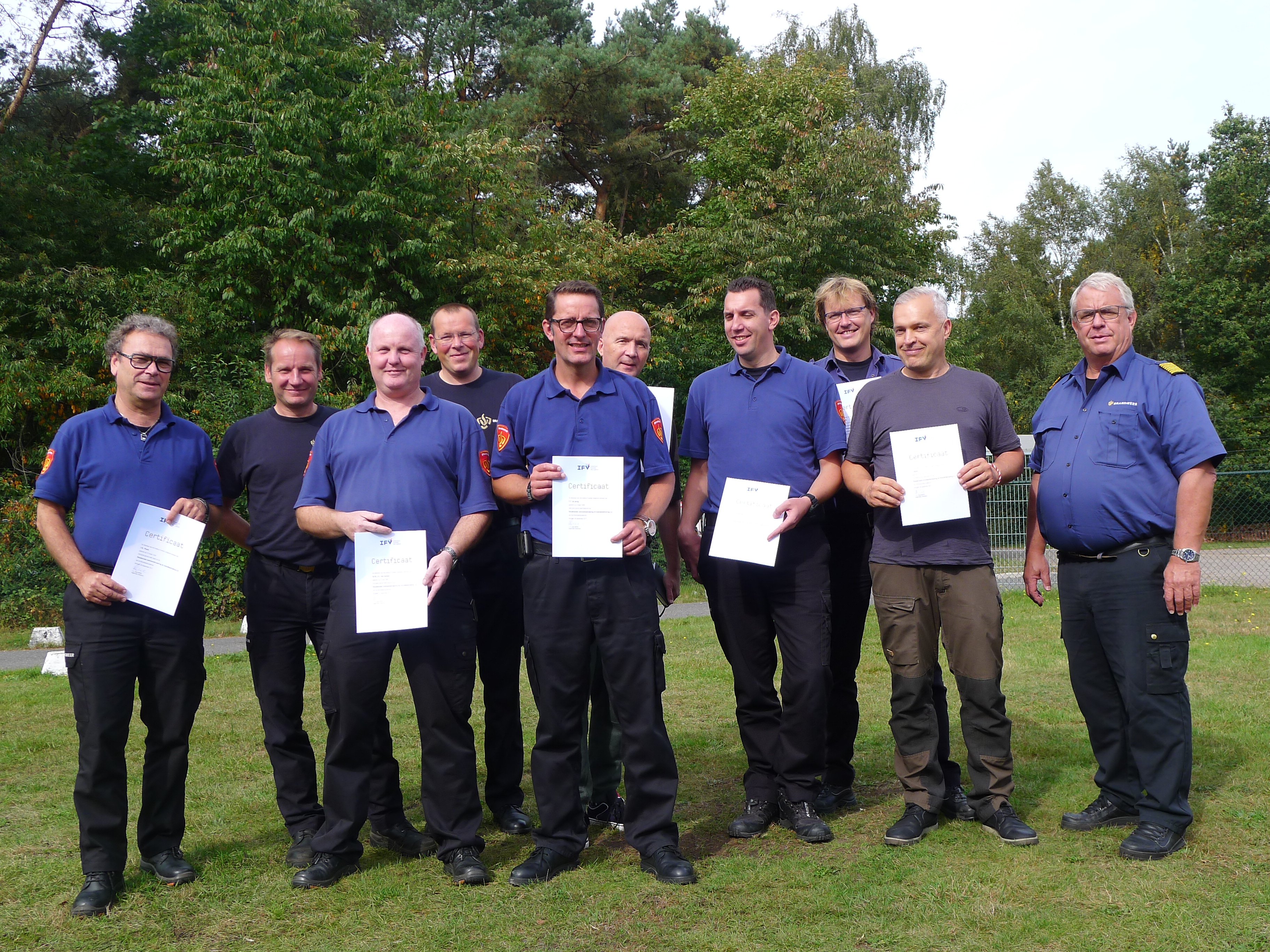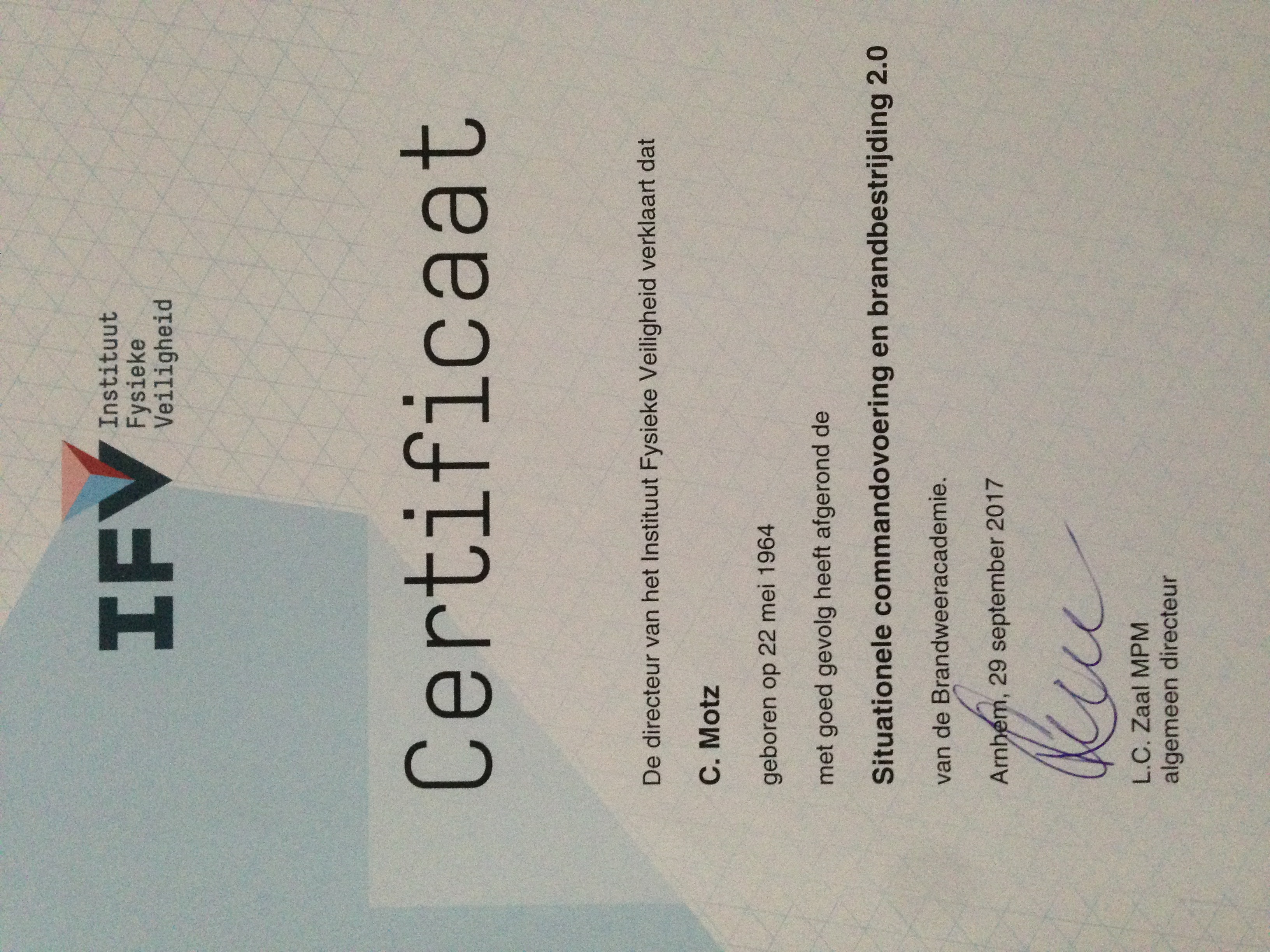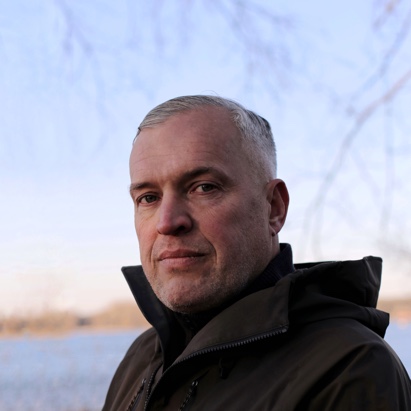Training Exercise Situational Command and Firefighting 2.0 Fire Service Academy/IFV Training Base Weeze, Germany
What role does situational awareness play in approaching a complex incident?
From Monday September 25 to Friday September 29, 2017, I took part in the Training Exercise on Situational Command for commanding officers from the various Dutch security regions. The training took place at the Weeze Training Centre, Germany and was organised by the Fire Service Academy/Institute for Safety (IFV).
Motive
The reason I joined this exercise is my contribution to the Human Factors section within the situational command structure. During the pilot, which started last year, I was training commanding officers in Weeze in tactical breathing, body awareness and situational awareness. In a feedback meeting I had suggested I could optimize my contribution for the coming period by taking part in this particular exercise as an observer.
Fred Vorenkamp, senior trainer and advisor at the Fire Service Academy then suggested it would be better if I took part as a full participant. This was a great opportunity for me to further deepen my knowledge of this method and to learn from fellow professionals in my field. As a former firefighter volunteer within the Rotterdam-Rijnmond security region I felt strongly involved in operations and it is great if I can contribute my expertise to make a difference.
Theory
To efficiently apply the methodology, the first two days covered examples both in theory and practice, whereby all participants were expected to refine their learning goals which they had to formulate and provide to the lecturers preceding the start of the course. Furthermore, the participating officers were expected to prepare and present a complex case to their class.
Situational command
In response to large incidents in the recent past, this method of operation was further developed and is being integrated within the Dutch National Fire Department. The army has longstanding experience in Mission Command (Auftragstaktik), where the ultimate goal is of great importance; within a previously determined range of boundary conditions, units are able to act autonomous in order to achieve their goals.
Swarming
An important concept is ‘Swarming’, analogous to flocks of birds and schools of fish which move synchronously without one clear leader. In complex and large scale incidents a commanding officer is deployed. To prevent him/her to get absorbed into the incident at hand without getting an overview first, the commanding officer can choose to gather data en route to the incident location via FABCM (Based on NDM; Naturalistic Decision Making). Swarming is a fluid form of command, whereby commanding officers and their troops have increased autonomy to effectively tackle the incident at hand. At the start of an incident there is usually chaos.
At these times it is crucial that the commanding officer takes t+15 to t+30 minutes to familiarize himself with the situation, still allowing sufficient time to upscale the response in case any difficulties or spreading of the incident (i.e. in case of fire) need to be addressed.
FABCM
This is the Dutch abbreviation for Facts, Analysis, Decision making, Communication and Monitoring. By getting an overview and analysis of the situation, the commanding officer can upscale by ordering his/her duty officers to ‘swarm’ at their own discretion. Even before the commanding officer has arrived, the commander of the first fire engine already operates autonomously. If the nature of the incident allows, this method can be continued. If, for example the safety of personnel is threatened or the officers in charge get stuck, the commanding officer can decide to switch to a hierarchical or specialist command type. This can be in the case of large-scale incidents with hazardous substances and/or danger of collapsing structures, when specialist advice and support is necessary.
Classification of Incidents
An incident can be straightforward, basic and clear, allowing for a hierarchical command. However, in the case of a complex incident, when the commanding officer lacks the knowledge and expertise, specialist support can be deployed, such as an Advisor Hazardous Substances and Technical Assistance. In the case of a large and complex incident, the commanding officer is unable to track everything that is happening and can order ‘swarming’(under certain conditions) to be deployed.
Characteristics
Naturally the Fire department works with structures and schemes to create an overview to be able to manage and contain an incident as effectively as possible. This so-called feature scheme includes; Person, Building, Fire, Intervention and Environment. These aspects play an essential role and will need to be taken into account when tackling an incident.
Deployment Plan
Once the commanding officer has finished his ‘fact finding’ and gotten an overview of the situation, he will reach out to his duty offices in the case of ‘swarming’ so that he can synchronise with them and have any missing data gaps filled enabling him to draft a provisional deployment plan. As mentioned earlier, incidents constantly change and evolve, requiring continuous recalibration. If it becomes clear that it will be difficult to get an overview of the whole situation as it is escalating (quickly), the commanding officer can upscale and alert fellow commanding officers, their specialists and firefighting units.
Human factors
To fight an incident be it as command officer, duty officer or team member, you need to be aware of your system, the internal and external influences which can affect your observation skills, your alertness and your operations. Fatigue, hunger, thirst, fear, pain but also noise, the weather, panicked bystanders and other stress factors all play a big part.
In the workshops Tactical Breathing, Body- and Situational Awareness I provide practical tools and approaches to support and balance the physiological and mental system.
Practice
By practicing, both virtually inside and practically outside, the reality became vividly realistic. Amidst these experienced officers my learning curve was very steep and I was able to accelerate, making rapid progress. In fact, it was the best learning environment I could have wished for. By actively taking part, seeing what was happening around me and to others, continuously evaluating, I was able to reflect on my own actions. In the practical exercise acting as a ‘Command Officer’ I was confronted with chaos and numerous stress factors. My intention was to remain centred and to see how events unfold. The main purpose was to get insight into the essence of this methodology in relation to physical and situational awareness as well as train myself to be able to get a grip on large-scale incidents and translate collected data to the most realistic and effective implementation plan.
Interference
External noise was very confrontational. If there is total chaos outside, you better make sure you are quiet inside. Of course I lacked thorough knowledge about the nature of fires, their physical processes, hazardous materials and related matters. I tried to overcome these gaps in my knowledge by upscaling to include external advisors from the start of the incident, while I was still gathering data on the incident. I do not know for sure whether I would actually have managed to save lives or whether I addressed the incident correctly as my knowledge and experience is simply not sufficient for this. However, I did attain my main goal; to get a better understanding what commanding officers experience when dealing with an incident.
(Gut) Feeling is Knowing
As my ability to absorb and process information was overwhelmed by the multitude of external stimuli and information, I noticed that I was sweating and that my hands had started to shake while I was trying to draw a sketch of the situation we were taking stock of; a burning building. I also ignored a chief emergency response officer by immediately passing judgement on him. I found his reason to retract his emergency response team and not attempt rescue of the elderly residents reprehensible, but my judgement also clouded my ability to see that he was simply doing his best in this situation. This is why practice is so important; to become aware of ingrained behaviour patterns and programmes and beliefs as these can adversely affect the safe and effective management of an incident.
Another interesting event occurred when the commander of the TS110 came out and indicated that he and his team were exhausted. Although I could see he was exhausted and that his breathing was tense, I emphasised this obvious fact to him and then just continued on by asking for a press officer on my two-way radio. I did not realise what he actually needed. This again was a situation where an overkill of notifications, stimuli, data and static as well as my rush to try to effectively manage and control the situation as quickly as possible, inhibited my ability to observe and process. What the commander actually needed were some encouraging words. This really got me thinking.
Process
Three senior trainers and a virtual reality expert exposed eight commanding officers and myself as external specialist for five long days to intense large-scale complex disaster scenarios. When these commanding officers return to their duty stations they will immediately implement the knowledge and skills they acquired here, I am very curious how this will develop. You cannot learn a new methodology in only five days’ time, although some of the commanding officers acknowledged they were already using certain aspects of ‘swarming’ before receiving this training. I feel inspired by this experience, the excellent learning environment and the new contacts I have made. I don’t know where it will take me, but I do know that I want to research and develop this on multiple levels to be able to integrate it into my field of work.
